#african eagle-owl
Photo
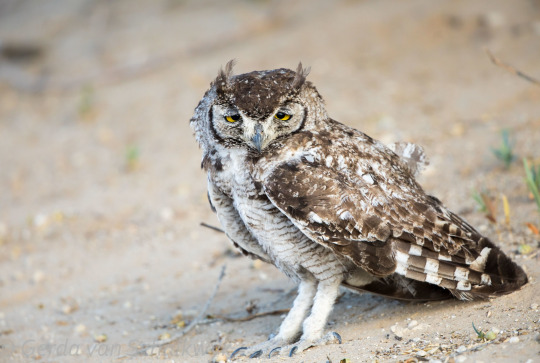
Spotted Eagle-owl by Gerda van Schalkwyk
Spotted Eagle-owl (Bubo africanus)
305 notes
·
View notes
Text
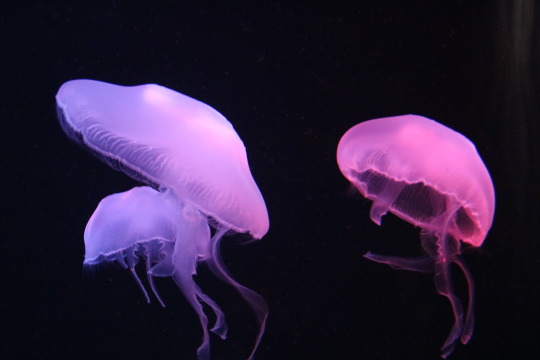
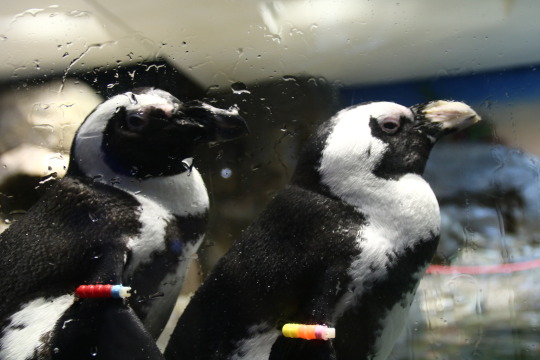
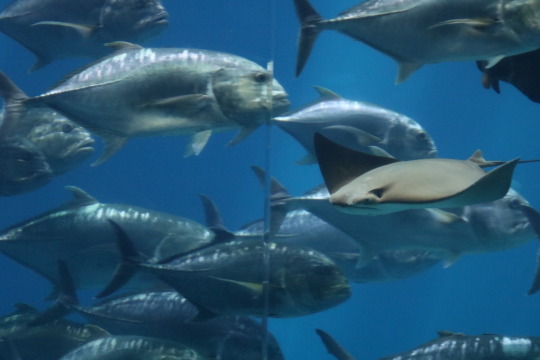
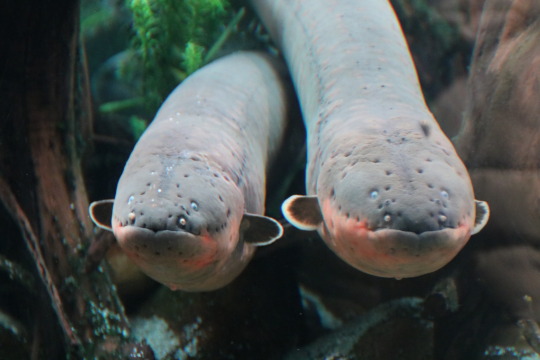





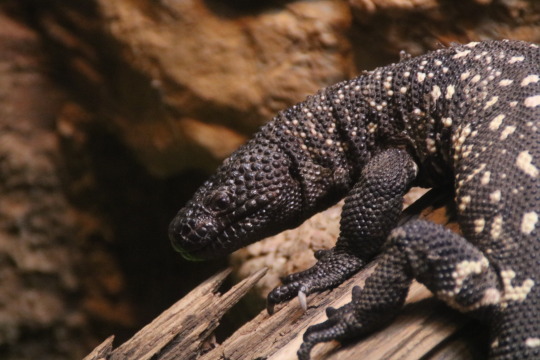





Took a family trip down to Atlanta this week to visit the aquarium and the zoo! Was able to take lots of animal photos yayyy!!!
#photography#zoo atlanta#georgia aquarium#I can't name all of these animals but I will try my best o7#moon jellyfish#african penguin#electric eel#chilean flamingo#flamingo#red panda#meerkat#beaded lizard#greater hornbill#wrinkled hornbill#bald eagle#milky eagle owl#kori bustard#long post#the penguins were my favorite :3#we need to go back in time to domesticate them#they had a little tube system so you could be “in” the exhibit with them#I took a video but I would like to blur out the faces in it first!
22 notes
·
View notes
Photo

Cape Eagle-Owl
Bubo capensis
Mkhomazi Wilderness area, South Africa
-29.61, 29.363
by decklan
#one day...one day!!#owls#owl#order strigiformes#strigiformes#eagle owl#strigidae#family strigidae#south africa#bird#birds#south african birds#ornithology#drakensberg#mkhomazi wilderness area#m
102 notes
·
View notes
Text
Artemis Fowl Winged AU:
—————
For obvious reasons, the Fowls are Corvidae- intelligence, curiosity, strong family bonds… and a proclivity for extreme mischief.
Artemis Fowl II- Western Jackdaw:

An underappreciated little corvid with glossy black feathers and bright blue eyes, perfect for Artemis! I've already mentioned corvid intelligence, but let me note in particular they are incredible problem solvers... and sometimes a little silly.
Artemis Fowl I (Fowl Senior)- Common Raven:
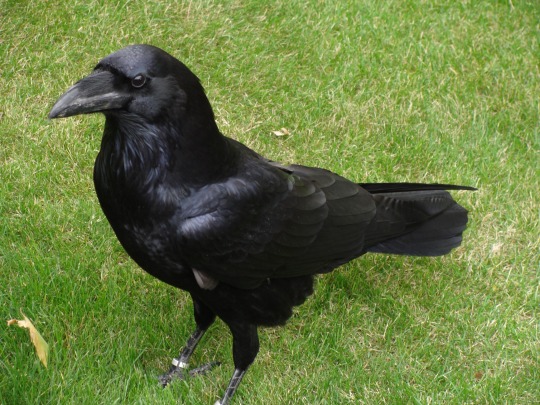
Clever? Check! Iconic? Check! Believed to be unfortunate to come across? Unfortunately, check! And finally, appropriately scruffy? Check!
Angeline Fowl- Barn Owl:

Well, some member of the family deserved to be an owl, and Barn Owls have the perfect mix of elegance, beauty and intellect to suit Angeline- they’re also quite cute, and can be very silly (spoken from experience!)
Myles and Beckett Fowl- Stellars’ Jay and Blue Jay:

Look at these birds and tell me it’s not the twins. Jays are known for mischief-making, extreme intellect (despite often being underestimated) and colorful, loud personalities- perfect for them!
Domovoi Butler- Golden Eagle:

A classic! While I was originally thinking ‘owl’, eagles have a certain reputation of nobility and power- they’ve also historically been used in falconry. They are fierce, protective, and incredibly strong birds.
Juliet Butler- Black and Chestnut Eagle:
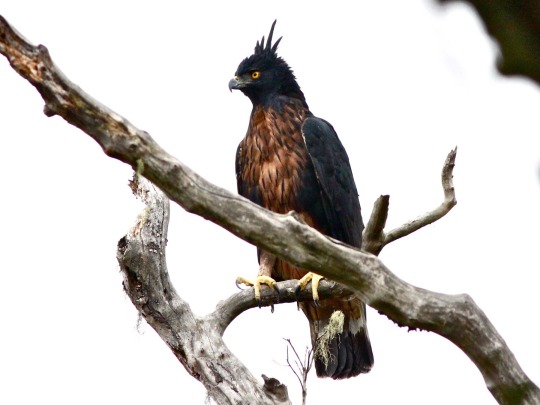
While I was this close to going with a Crested Caracara or some form of kite, Juliet deserves ‘eagle’ status alongside her brother. Further research led me to various ‘hawk-eagles’, smaller than their more famous cousins and built just a little bit different- this bird is colorful and quick and still quite powerful. Though, in all truth, I imagine Juliet would dye her feathers green no matter what wings she’d have.
Holly Short- Common Kestrel:
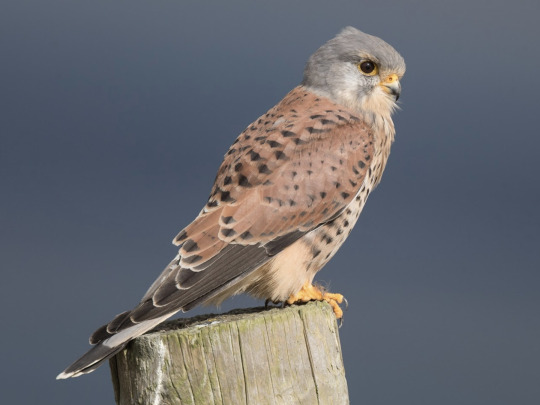
A small bird for a small fairy! While a kestrel is one of the smallest raptors, they are nonetheless incredibly fierce and capable of some pretty fancy flying, including the unique ability to ‘hover’ in midair!
Mulch- Burrowing Owl
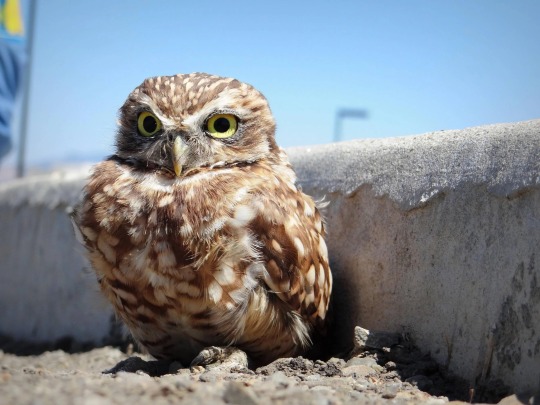
I don’t think I really have to explain myself here, lol.
(now… onto the villains! Be warned for some blood ahead!)
Opal Koboi- Little Brown Bat
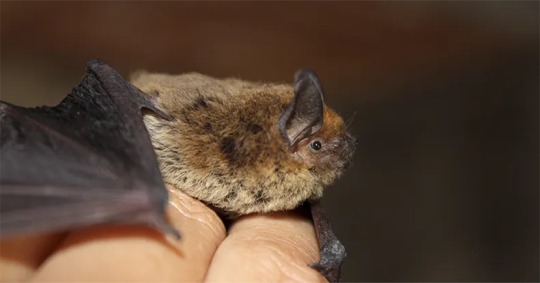
Now, I know what you’re thinking. “Why not a vampire bat? She’s a villain!” And A. It feels too easy, and B. Vampire bats are highly social (which, granted, most bats are), and more importantly, known to take care of older or sick members of their swarm! That is too compassionate for Opal. So instead, I chose something known for being small, fairly ‘cute’, and, most importantly-
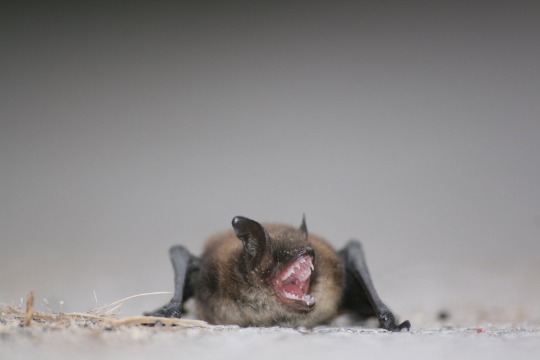
Absolutely full of rage.
Jon Spiro- Peregrine Falcon
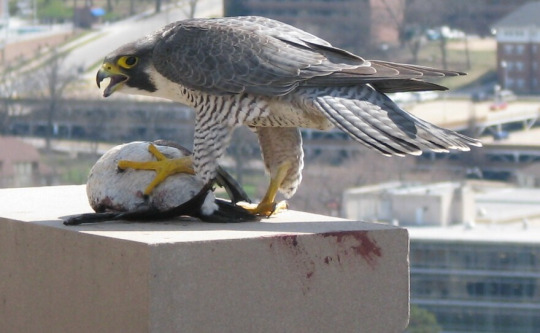
A cosmopolitan bird, the peregrine falcon is a bird perfectly at home in the big city-in fact, peregrine falcons have been observed to fly faster and hunt more successfully when among the skyscrapered skyline! Primarily preying on other birds, the peregrine falcon is a serious threat, even if it's not particularly big or strong, and its urban lifestyle makes it well-suited to one Jon Spiro.
Britva- Giant Petrel

A relatively underrated villain in the series, but in my opinion the most grounded in reality and particularly intimidating. Given the Bay of Kola is his territory, a seabird felt appropriate, and these birds are big, bad, and brutal. A true scourge on other creatures, that's for sure.
Damon Kronski- Blood Pheasant

Finally, some Galliforme representation! These birds are relatively uncommon in the world of public knowledge, but very flashy- just look at it! The males are brightly-colored, but sharply-spurred, and can be quite fierce when disturbed.
Teddy Bleedham-Drye- Cape Vulture

I don't really think I need to elaborate here, lol.
#artemis fowl#I know i missed some people but I'm getting tired lol- I'll mention them here. Uncle Foxy is a European Magpie. Minerva is an African Grey#-parrot. Kong (i think that's the guy from TLC?) is a Striated Caracara. No1 is a Mourning Dove. The Major is a Martial Eagle.#Julius Root and his brother are Old English Game Bantams. Trouble is a Saw-Whet Owl.#i love wing aus so much! hopefully at some point i can write some fics for it#winged au
57 notes
·
View notes
Photo
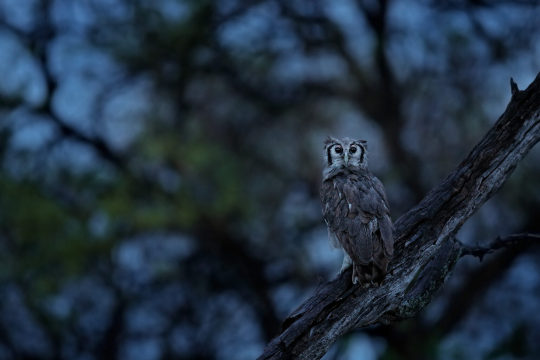
Verreaux’s Eagle-Owl
Owls
Photographer: Ondrej Prosicky

Blakiston’s Eagle-owl

African Barred Owlet

Barn Owl
#ondrej prosicky#photographer#bird photography#nature#animal#verreaux's eagle-owl#blakiston's eagle-owl#owl#african barred owlet#barn owl
63 notes
·
View notes
Text
Spotted Eagle Owl, blending in.
3 notes
·
View notes
Text
huge respect to @myxinidaes for reblogging that post with 100 birds
#ok im gonna try to list 100 birds. house sparrow song sparrow fox sparrow white-throated sparrow dark-eyed junco#robin. ovenbird. hermit thrush. carolina wren. cardinal#carolina chickadee. house finch. purple finch. goldfinch. white-breasted nuthatch#red-breasted nuthatch. hooded merganser. american coot. wood duck. mallard duck#surf scoter. ruddy duck. black duck. northern shoveler. common loon#crow. fish crow. raven. turkey vulture. bald eagle#feral pigeon. mourning dove. turkey. quail. AMERICAN WOODCOCK#solitary sandpiper. herring gull. great black-backed gull. piping plover. killdeer#yellow-rumped warbler. pine warbler. palm warbler. black and white warbler. i cant think of a fifth warbler. red tailed hawk#cooper's hawk. osprey. barn swallow. tree swallow. blue jay#peacock. egyptian goose. peregrine falcon. merlin. canadian goose#green heron. starting to struggle here. flamingo. skua. albatross. great blue heron#barn owl - snowy owl - great horned owl - barred owl - WHAT was that little owl in central park called - uhhh mandarin duck#chicken. california condor. rose finch (there are many but i dont remember any of the weirder species). adelie penguin. emperor penguin#northern mockingbird.. starling.. grackle.. african gray parrot.. monk parakeet#stellar's jay ... baltimore oriole.. argh what's the other oriole we get. DOWNY WOODPECKER.. hairy woodpecker... pileated woodpecker#red-headed woodpecker. red-bellied woodpecker. ruby-throated hummingbird. scarlet macaw. whooping crane#whippoorwill. snowy egret. great egret. european robin. bird of paradise#there's a warbler that's just 'yellow' right? yellow warbler? cormorant...#struggling with some where i cant remember the exact name like was it a 'double crested' cormorant or something else.#zebra finch .. blue-footed booby... pelican....#australian magpie. The Other Magpie. ibis (nonspecific). potoo. EASTERN BLUEBIRDDDDDD !!!#ceruleanrambling#now i can go read yours
20 notes
·
View notes
Text

A bunch of bird doodles! I used a magic brush (something like this)for the random stroke colours.
#birds#doodles#macaw#african grey#budgie#lovebird#cockatiel#owl#robin#mourning dove#finch#cassowary#blue jay#eagle#cockatoo#canada goose#indian ringneck#hummingbird#chickadee#quail#swift#pigeon#seagull#duck#crow#crane#ipadpro#procreateapp
51 notes
·
View notes
Text

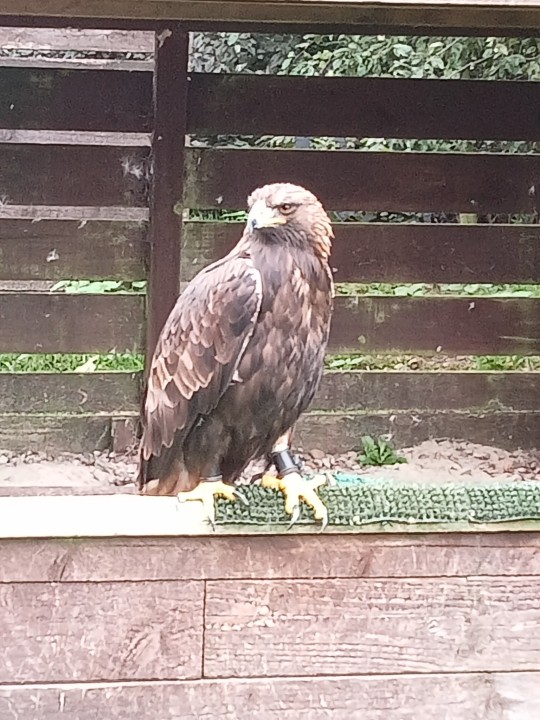
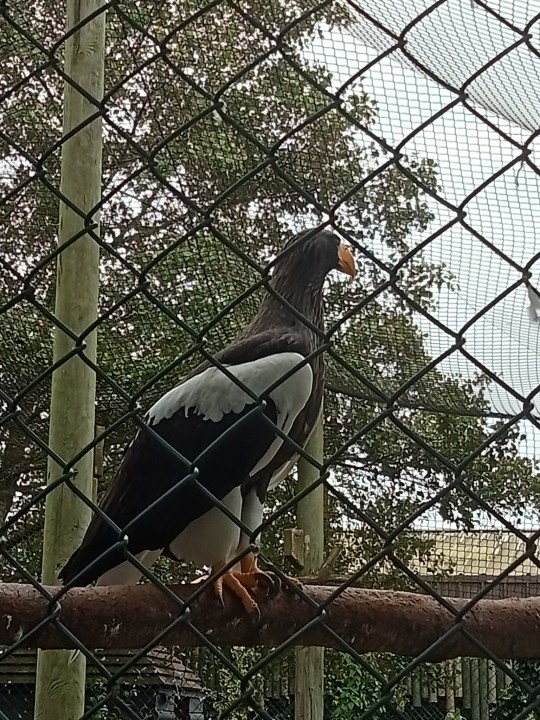

#birds#got a membership at a bird of prey centre near my town and i am going to be annoying about this#burrowing owl#golden eagle#steller's sea eagle#african harrier hawk
2 notes
·
View notes
Text
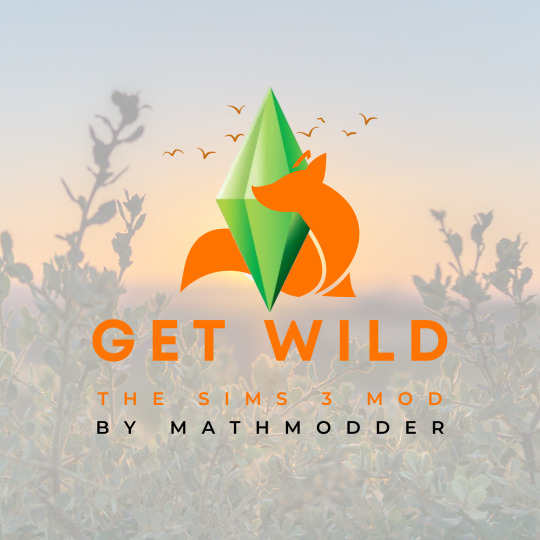
youtube
Get Wild Mod by MathModder (In Progress)
What you need to know:
This mod introduces wild animals into your game map that spawn naturally in beetle spawners. It includes birds, small mammals, amphibians, more insects and reptiles in nature zones. Birds can fly and land in random locations and ground animals can be seen walking around the map.
You can choose ONE from various versions that best suit your world. Select the version that spawns specific animals suitable for your World's location.
Here's a list of potential versions that will be included in the mod:
All Wildlife (City World)*
All Wildlife (Medieval / Country town)**
American Wildlife (City World)*
American Wildlife (Medieval / Country town)**
European Wildlife (City World)*
European Wildlife (Medieval / Country town)**
African Wildlife (City World)*
African Wildlife (Medieval / Country town)**
Eastern Wildlife (City World)*
Eastern Wildlife (Medieval / Country town)**
*Versions for cities will have additional specific effects that help create a more beautiful environment for your city, such as planes in the sky, fireworks, sunshine rays during the day, and sky lanterns for the All Wildlife and Eastern Wildlife version.
**Versions for Medieval/Country towns will feature additional specific effects to enhance the beauty of your world, including hot air balloons in the sky, sunshine rays during the day, and more.
These additional effects mentioned above will appear rarely and randomly in your world.
Can I place individual animals in specific locations, such as on rocks or tables?
In a future update after launch, this function will be added, for now they will only spawn where there is a beetle spawner. Ground animals on the ground and birds in the air.
Is the mod heavy to run?
Within the game I am optimizing it so that a small number of animals spawn at the same time and only spawn at a maximum distance of 500 meters from the player's camera.
How many files will there be?
Because there are many animals and specific animations for each one, the files will be heavy, will be a maximum of 2 to 3 files. In tests in my game with 150 other mods from other creators, I didn't see any loss of performance due to the optimization I'm doing within the game.
It is worth mentioning that some files will need to be placed in the Overrides folder and others in the Packages folder, they will all be specified at launch.
Is this mod compatible with other effect mods?
Yes, it will be compatible.
Bugs:
Depending on the location, there may be some bugs such as birds landing in the air or animals walking a little above the ground, this is due to calculation problems on certain game surfaces and physics, whether hills or mountains, but over time I will update and see What can I do to reduce this. In this case I depend on the engine the game has and whether it is possible to correct certain errors.
Release date:
Between January and February 2024 (It is in the testing phase)
Here is the list of animals that will be included in the mod:
American Eagle Bird
Anteater
Artic Tern
Aphids
Bat
Beaver
Bees
Black Bird
Black Egret
Black Fox
Black Goose
Black Rat
Blue Bird
Blue Frog
Blue Green Parrot Bird
Blue Jay
Blue Lizard
Blue Parakeet
Blue Macaw
Booby Bird
Brown Bird
Brown Bunny
Brown Egret
Brown Hen
Brown Monkey
Brown Owl Bird
Brown Pelican Bird
Brown Squirrel
Bullfinch Bird
Bullfrog
Butterflies (many colors)
Buzzard Bird
Canary
Capercaillie Female Bird
Capercaillie Male Bird
Canadian Goose
Cardinal
Carcara Bird
Charadriidae
Chimp
Chimpmunk
Chukar partridge
Condor Bird
Cormorant
Coyote
Crow
Cicada
Cockroach
Dart Frog
Dove Bird
Dragonfly
Egret
European Goldfinch
Falcon
Female Peacock Bird
Flamingo Bird
Fox
Fireflies
Golden Monkey
Golden Pheasant
Goldfinch
Gray Frog
Gray Lizard
Gray Parrot Bird
Gray Partridge
Green Bird
Green Frog
Green Lizard
Green Parakeet
Green Parrot Bird
Harlequin Duck
Hawk
Heron Bird
Hoopoe Bird
Horn Owl Bird
Humming Bird
Humming Bird Loop
Jack Rabbit
Kinkajou
Komodo Dragon
Ladybug
Lilac-breasted Roller
Little Red Parrot
Little Yellow Bird
Little Yellow Parrot
Magpie
Mallard Bird
Marmot
Marten
Male Peacock Bird
Mole
Multicolor Bird
Nude Rat
Orange Bird
Orange Fox
Orange Frog
Owl
Pangolin
Pheasant
Pink Cockatoo
Piper Bird
Possum
Pigeon
Quero-Quero Bird
Raccoon
Raven
Red-Eyed
Red Fox
Red Frog
Red Head White Cardeal
Red Lizard
Red Panda
Red Macaw
Red-crowned Crane
Rooster
Scissor White Bird
Sea Parrot Bird
Seagull
Silver Pigeon
Skunk
Snake
Sparrow
Spiny Lizard
Stork
Striped Lizard
Swallow Bird
Toco Toucan
Tortoise
Vulture Bird
White Bunny
White Cockatoo Bird
White Diving Bird
White Fox
White Goose
White Hen
White Monkey
White Owl
White Pelican Bird
White Piper Bird
White Rat
White Squirrel
White Swan
Wild Rabbit
Woodpecker
Yellow Lizard
Yellow Parakeet
Yellow Pelican Bird
Yellow Toucan
Want to support? Be a Patreon and get Early Access!
Math Modder | The Sims 3 Mods and MO-MO-MORE! | Patreon
If you have any questions, leave them in the comments and I will add them to this post!
476 notes
·
View notes
Text
Hermits as birds from where they live/were born!
note: my knowledge is centered around North American birds, so sorry if the european ones aren't super accurate
Bdubs: Northern Saw-Whet Owl. He's just a little guy with big eyes. Small and evil, love him

Cub: Common Starling. Skulk like-iridescence, incredibly friendly. Plus, with Cub running the horn store this season, he NEEDED to be the bird that can imitate pretty much any noise it hears

Doc: Bonelli's Eagle. Large raptor found in Germany. It's straight "brow" and hunched posture remind me of Doc

Etho: Common Loon. THE! CANADIAN! BIRD! Despite being "common", their pattern is simply EXQUISITE Plus, it has a red eye! Also listen to the noises these things make, it's literally stock nature sounds all in one bird. Also, I'd put Etho on my one dollar coin.

False: Barn Owl. Very elegant owl, I just feel it suits her, that's all. Very stately posture.
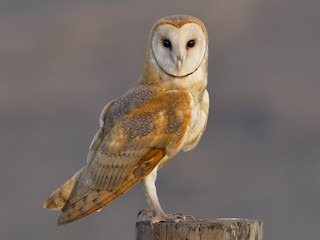
Gem (Season 10 specifically): Great Blue Heron. It's a fisher, it's blue, it's menacing, what more could you ask for?

Scar (Hotguy): Double-crested Cormorant: A waterfowl bc scar did competitive swimming, it's got a slightly funky shape which I feel suits scar's personality. It also has the Hotguy colors!

Grian: Eurasian Bullfinch. Parrot Grian will not reign supreme. Look at that little guy. He's mischievous, he's red, I do not trust him.

Hypno: Stellar's Jay. My provincial bird! I just think both have very chill and cool personalities

Jevin: Lazuli Bunting. Just a little blue guy!

Impulse: American Goldfinch. Black and yellow, need I say more?

Iskall: Booted Eagle. Something about a stout raptor just feels right. Look at that posture. Reminds me of when Iskall tries to copy the brits' accents.

Joe: Turkey Vulture. Although seen as odd or menacing, all vultures are integral to the local ecosystem and are in actuality, very elegant and gentle birds.

Keralis: Boreal Owl. Yes, I did make the two guys with big eyes owls, What of it? LOOK at him. Put a little hardhat on him, put a little hawiian shirt on him. Precious sweet face.

Mumbo: Avocet. It's basically a vibe check and a mustache joke.

Peal: Black Swan. Big 5AM Pearl vibes. Giant, beautiful, protective. Love that for her.
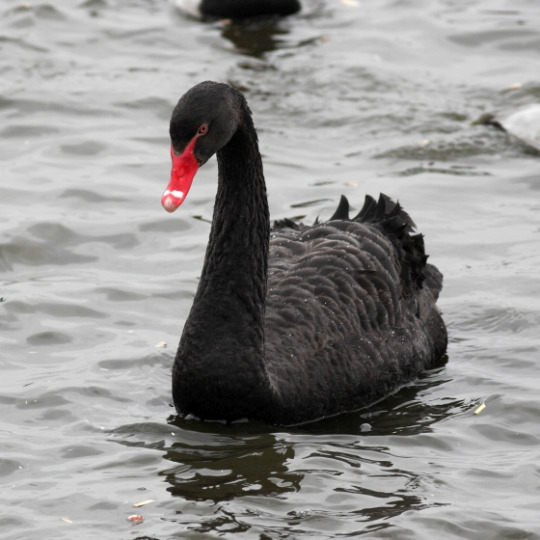
Ren: Giant Kingfisher. Obligatory King Ren joke, it's a South African bird, and it's kinda goofy looking. I think the speckled feathers look like a ruffled fur collar on a king's cape.

Skizz: Golden Eagle. Large, majestic, hella strong, and he's wearing pants :3

Joel: Tree Swallow. Very small, beautiful, agile bird. The swallow's wings remind me of Asian art styles.

Stress: Magpie. GOR-JUS and LOUD. Imagine her next to Iskall (they're very similar in size, bless them)

Tango: Swainson's Hawk. I fought every bone in my body to not make an Arizona Cardinals joke when I already made a Phoenix Coyotes one maybe half an hour before. The Swainson's hawk is on the smaller size, but still a deadly spitfire, which I think suits Tango

TFC: Brown Pelican. A solitary bird, definitely a rare sighting. TFC was always joking about how much he would eat, I thought a pelican was apt

Beef: Barred Owl. MY FAVORITE OWL. I literally call them 'round beefy boys' and they're just so sweet and I love them

Wels: American Kestrel. I LOVE these little guys. Simply the smallest, cutest and beautiful falcon there is. They're about the size of a pigeon. It's just got such a regal posture despite being a little cutie.
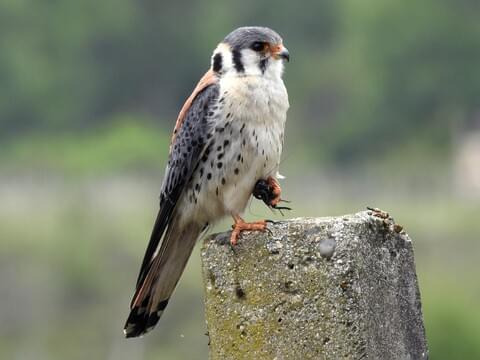
XB: Rock Pigeon. Despite being common and seen as a "dumb pest", they are pretty intelligent, there's a reason they were used to carry messages around. They're also a close relation to doves! The green collar also is like the jacket collar on his skin.

Xisuma: Semipalmated Plover. X and Mumbo were both chosen because of how those birds run on the beach. They're RIDICULOUS. This subspecies is exclusively because it look like he's wearing a little helmet.

Zedaph: Firecrest. Just the GOOFIEST little guy I found on the wiki of British birds. Look at that thing /aff. Also, Zed do be blowing up a lot

Cleo: Partridge. Beautiful bird, looks like they want to kill you in your sleep, just like Cleo.

#long post#hermitcraft#bdoubleo100#bdubs#bdoubleo#cubfan135#cubfan#docm77#docm#falsesymmetry#geminitay#goodtimeswithscar#scar#grian#hypnotizd#ethoslab#etho#ijevin#impulsesv#impulse#iskall85#iskall#joehills#keralis#mumbo#mumbojumbo#pearlescentmoon#rendog#skizzleman#smallishbeans
148 notes
·
View notes
Text
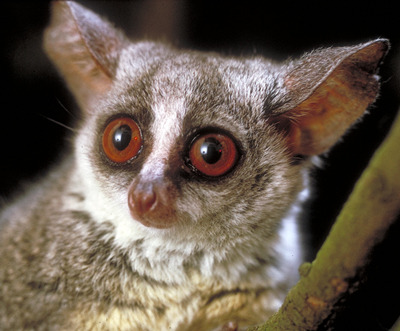

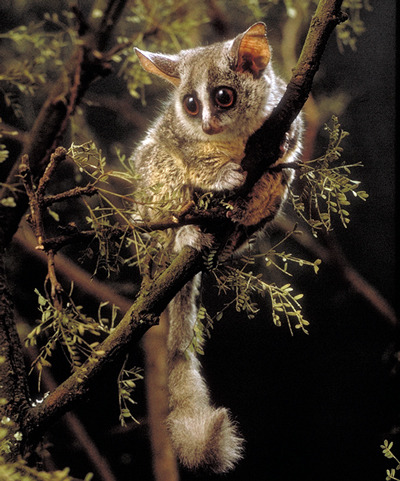
Go Go Southern Lesser Galago!
Also known as the South African galago or the mohol bushbaby, the southern lesser galago (Galago moholi) is a small primate from the Galagidae, or bushbaby family. As the name implies, they are located only in southern Africa, from northern South Africa up to Rwanda. Their preferred habitats are savannahs and semi-arid woodlands, where they can often be found high in the canopy, and they are particularly associated with Acacia trees.
The mohol bushbaby is one of the smaller members of its group; at full height they stand no taller than 15 cm (6 in) and weigh only 225 g (7.9 oz). In fact, their tail is longer than their body, easily reaching 23 cm (9 in) in length. While it isn't prehensile, the tail is still an important tool for climbing as it gives G. moholi an excellent sense of balance. Along with their incredible tails, the South African galago also has one of the largest sets of ears of any primate, proportional to its size; these ears can move independently to help the southen lesser bushbaby avoid predators. G. moholi's final distinguishing feature are their eyes, which are incredibly large and a distinctive orange color. Individuals themselves tend to be gray or light brown, which helps them blend in with their surroundings.
South African galagos are almost strictly nocturnal. At night, they forage through the canopy for moths and beetles. These bits of protein, however, are supplemental; the mohol bushbaby's primary source of food is gum, or hardened sap from the Acacia plant. G. moholi has several adaptations allowing it to specialize in gum extraction, including scraping teeth on the lower mandible; long, rough tongues; and digestive systems that have evolved to break down and ferment the tough substance. Because they have very few defense mechanisms, southern lesser galagos are a common prey for many nocturnal species like eagles, owls, snakes, mongooses, civets, and gennets.
One of the few ways the South African bushbaby avoids predation is through its social units. Groups of 2-7-- typically composed of a female, her young, and a few non-reproductive relatives-- forage together. In these groups, their collective night vision and highly-developed hearing allow them to detect and alert each other to predators long before the threat is immanent. While individuals forage seperately, they keep in contact via loud, high pitched calls that can serve as a warning for predators, a point of contact between mother and offspring, or a territorial warning between males.
Male G. moholi live seperately from social groups, and are highly aggressive against other males invading their territory. This area often overlaps that of several female-led groups, but they only come in contact with each other during the mating season. Unusually, the species has two mating seasons through the year; from January to Februrary (late summer) and from October to November (early spring). Following a gestation period of 120 days, females produce a single set of twins each mating season. Each set is weaned after approximately 3 months, and young become fully mature at 300 days. Female offspring may join the mother's group, while males leave to establish their own territory. In the wild, an individual may live up to 16 years.
Conservation status: The IUCN has classified the South African bushbaby as Least Concern. Studies have indicated that the population is stable and, in some areas, increasing. However, in other areas the species is threatened by habitat loss and possibly capture for the pet and bushmeat trade.
If you like what I do, consider leaving a tip or buying me a ko-fi!
Photos
Gerald Doyle
Peter Webb via iNaturalist
#Southern lesser galago#south african bushbaby#Primates#Galagidae#galagos#bushbabies#mammals#savannah mammals#tropical forest mammals#africa#south africa#animal facts#biology#zoology
166 notes
·
View notes
Text
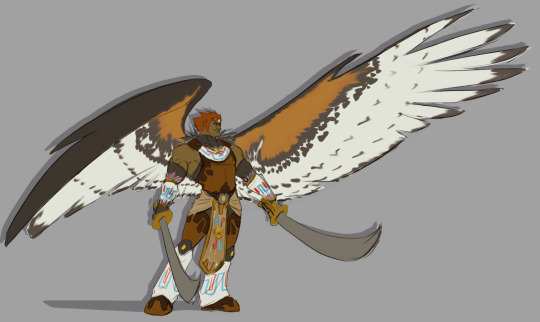

My buddy @eissibee is doing cool art of Zelda with owl wings so I wanted to give Gan a shot! I went with an African crested eagle and got a little carried away <<;
#i'm sorry Issie I was just gonna doodle and now this is here aklsjd#sketchbook#ganondorf#oot ganondorf#sketchesart
355 notes
·
View notes
Note







Saw some birds at the zoo,
A laughing owl, bald eagle, scarlet ibis, puffbird, mute swan, malagsy sacred ibis, and African spoonbill
#obey me rp blog#obey me nightbringer#obey me rp#obey me! shall we date?#obey me#obey me lucifer#obey me shall we date#obey me swd#om! shall we date#obey me roleplay#Lucifer loves birds
22 notes
·
View notes
Text

Sorry I was on an reenactment event- and well say hello to my new fluffy friend - This is an African Spotted Eagle Owl
98 notes
·
View notes
Text
I would like to offer this resource for therians, an extensive list of all of Sir David Attenborough’s nature documentaries that are available on soap2day, and a full list of what species* they each (notably, prominently) feature the natural behaviors of, separated by episode, and omitting species that were only shown dead, juvenile or being predated on. This took me a while (I have been working on it since Prehistoric Planet’s release) because I did in fact have to watch every single series in full in order to list all the species and the episodes are around 50 minutes long, but enjoy.
Long post ahead:
Most of these shows have closed captioning, which is why I’ve picked soap2day. Planet Earth is the only one that doesn’t. I did not include Dynasties and Dynasties II because each episode only features one species.
Thank you to Birch (@ambiguousmutt) for his help (he watched about half of the episodes) so I didn’t have to do it individually. Credit goes to him as well.
*Sometimes Attenborough doesn’t say the specific species and I was too busy trying to get through the episodes to identify it. In those cases I just put the most specific name I could.
Planet Earth
Episode one (From Pole to Pole): emperor penguin, polar bear, caribou, arctic grey wolf, Amur leopard, six-plumed bird-of-paradise, superb bird-of-paradise, great white shark, African elephant, African buffalo, lechwe, baboon, African wild dog
Episode two (Mountains): gelada, walia ibex, Ethiopian wolf, guanaco, cougar, grizzly bear, markhor, snow leopard, golden eagle, grey wolf, panda, golden snub-nosed monkey, red panda, demoiselle crane
Episode three (Fresh Water): giant salamander, grizzly bear, smooth-coated otter, Nile crocodile, dolphin fish, midge, Amazon river dolphin, dorado, piranha, spectacled caiman, crab-eating macaque, snow goose
Episode four (Caves): wrinkle-lipped free-tailed bat, cockroach, bat hawk, cave swiftlet, yellow-red rat snake, Texas blind salamander
Episode five (Deserts): Bactrian camel, dromedary camel, red kangaroo, fennec fox, guanaco, long-nosed bat, Nubian ibex, flat lizard, lion, African elephant, locust
Episode six (Ice Worlds): snow petrel, Antarctic petrel, south polar skua, humpback whale, emperor penguin, eider, muskox, arctic grey wolf, polar bear, little auk, arctic fox
Episode seven (Great Plains): Mongolian gazelle, red-billed quelea, wildebeest, snow goose, arctic fox, arctic grey wolf, bison, wild ass, Tibetan fox, pygmy hog, African elephant, lion, baboon
Episode eight (Jungles): magnificent bird-of-paradise, spider monkey, howler monkey, siamang gibbon, gliding tree frog, colugo, red crab spider, African elephant, chimpanzee
Episode nine (The Shallow Seas): humpback whale, multiple corals, banded sea krait, trevally, dugong, bottlenose dolphin, Socotra cormorant, salp, comb jelly, sea lion, dusky dolphin, sea urchin, sunflower starfish, short-tailed stingray, great white shark, king penguin, fur seal
Episode ten (Seasonal Forests): Eurasian lynx, moose, crossbill, wolverine, western capercaillie, pine marten, great grey owl, pudu, kodkod, mandarin duck, cicada, red deer, Amur leopard, tiger, mouse lemur
Episode eleven (Ocean Deep): whale shark, oceanic whitetip shark, common dolphin, Cory's shearwater, manta ray, sea spider, vampire squid, spider crab, unnamed deep sea eel, giant isopod, chambered nautilus, Pacific spotted dolphin, mola mola, frigatebird, sailfish, blue whale
Planet Earth II
Episode one (Islands): pygmy three-toed sloth, Komodo dragon, sifaka, marine iguana, Galapagos racer, Buller's albatross, fairy tern, Christmas Island red crab, yellow crazy ant, chinstrap penguin
Episode two (Mountains): Nubian ibex, red fox, golden eagle, grizzly bear, bobcat, flamingo, mountain viscacha rat, snow leopard
Episode three (Jungles): spider monkey, flying lizard, sword-billed hummingbird, river dolphin, jaguar, glass frog, paper wasp, click beetle, red bird of paradise, Wilson's bird of paradise, indri
Episode four (Deserts): lion, Harris's hawk, shrike, locust, sand grouse, pale chanting goshawk, feral mustang, golden mole, desert long-eared bat, darkling beetle, Namaqua chameleon
Episode five (Grasslands): saiga antelope, lion, harvest mouse, carmine bee-eater, Kori bustard, African elephant, serval, Jackson's widowbird, grasscutter ant, compass termite, giant anteater, bison, red fox, arctic grey wolf
Episode six (Cities): langur, peregrine falcon, leopard, European starling, great bowerbird, raccoon, rhesus macaque, spotted hyena, wels catfish
Our Planet
Episode one (One Planet): lesser flamingo, orchid bee, golden-collared manakin, red-capped manakin, blue manakin, cormorant, booby, common dolphin, shearwater, African wild dog, timber wolf
Episode two (Frozen Worlds): gentoo penguin, wandering albatross, narwhal, Pacific walrus, humpback whale, orca, leopard seal, polar bear
Episode three (Jungles): lowland gorilla, forest elephant, black sicklebill, twelve-wired bird-of-paradise, western parotia, mountain treeshrew, Philippine eagle, black spider monkey, leafcutter ant, Sumatra orangutan, velvet worm
Episode four (Coastal Seas): northern fur seal, compass jellyfish, giant trevally, mobula ray, Atlantic stingray, bottlenose dolphin, grey reef shark, whitetip reef shark, sea otter, California sheephead wrasse, Steller's sea lion, bald eagle, humpback whale, Guanay cormorant, Inca tern, Peruvian booby, South American sea lion
Episode five (From Deserts to Grasslands): Socotran cormorant, Arabian leopard, Arabian oryx, African elephant, cheetah, bison, Alcon blue butterfly, saiga, Przewalski's wild horse, tiger
Episode six (The High Seas): blue whale, spinner dolphin, mobula ray, oarfish, anglerfish, bristle worm, giant petrel, black-browed albatross, wandering albatross, bluefin tuna, sea lion, humpback whale
Episode seven (Fresh Water): Australian pelican, torrent duck, grizzly bear, manatee, giant mayfly, common kingfisher, osprey, jaguar, callipterus cichlid, Siamese fighting fish, hippopotamus, lion, African elephant, sandhill crane
Episode eight (Forests): Siberian tiger, bald eagle, rough-skinned newt, great hornbill, African elephant, African wild dog, fossa, gray mouse lemur
A Perfect Planet
Episode one (Volcano): lesser flamingo, marabou stork, Galápagos land iguana, vampire ground finch, Aldabra giant tortoise, North American river otter, coyote, Kamchatka brown bear, wildebeest
Episode two (The Sun): yellow-cheeked gibbon, fig wasp, arctic grey wolf, wood frog, garter snake, arctic fox, Saharan silver ant, golden snub-nosed monkey, sooty shearwater, humpback whales
Episode three (Weather): straw-colored fruit bat, fire ant, Amazonian giant river turtle, desert rain frog, Bactrian camel, Christmas Island red crab, carmine bee-eater, Nile crocodile, African fish eagle, hippopotamus
Episode four (Oceans): common dolphin, marine iguana, flightless cormorant, flamboyant cuttlefish, eider, bottlenose dolphin, lemon shark, manta ray, blacktip reef shark, trevally, rockhopper pengin, Eden's whale
Episode five (Humans): none
Life
Episode one (Challenges of Life): bottlenose dolphins, cheetah, panther chameleon, orca, brown-tufted capuchin, stalk-eyed fly, hippopotamus, Clark's grebe, giant Pacific octopus, strawberry poison-dart frog, leopard seal, orangutan
Episode two (Reptiles and Amphibians): pebble toad, caiman, basilisk, Brazilian pygmy gecko, panther chameleon, Namaqua chameleon, red-sided garter snake, collared iguana, hog-nosed snake, horned lizard, sea krait, African bullfrog, Komodo dragon
Episode three (Mammals): Weddell seal, elephant shrew, aye-aye, caribou, straw-colored fruit bat, lion, spotted hyena, polar bear, brown-nosed coati, meerkat, African elephant, humpback whale
Episode four (Fish): sailfish, flying fish, weedy sea dragon, convict fish, sarcastic fringehead, mudskipper, Hawaiian freshwater goby, hippopotamus, barbel, silvertip shark, clownfish, sea lion, ragged tooth shark, multiple snapper, whale shark
Episode five (Birds): spatuletail hummingbird, lammergeier, red-billed tropicbird, magnificent frigatebird, red knot, horseshoe crab, lesser flamingo, chinstrap penguin, great white pelican, Clark’s grebe, sage grouse, Vogelkop bowerbird
Episode six (Insects): Darwin’s beetle, unnamed damselfly, monarch butterfly, alkali fly, Wilson’s phalarope, oogpister beetle, mongoose, bombardier beetle, honey bee, black bear, Japanese red bug, Dawson’s bee, grass cutter ant
Episode seven (Hunters and Hunted): ibex, short-tailed stoat, brown bear, Ethiopian wolf, California ground squirrel, star-nosed mole, cheetah, red fox, greater bulldog bat, bottlenose dolphin, Bengal tiger, rattlesnake, orca
Episode eight (Creatures of the Deep): Pompeii worm, Humboldt squid, nemertean worm, moon jelly, fried egg jellyfish, spider crab, stingray, cuttlefish, giant Pacific octopus, sunflower sea star, king crab, cleaner shrimp
Episode nine (Plants): monarch butterfly, purple-throated carib hummingbird
Episode ten (Primates): Hamadryas baboon, Japanese macaque, lowland gorilla, spectral tarsier, phayre's leaf monkey, ring-tailed lemur, Sumatra orangutan, chacma baboon, white-faced capuchin, brown-tufted capuchin, western chimpanzee
Blue Planet II
Episode one (One Ocean): bottlenose dolphin, tuskfish, tern, giant trevally, mobula ray, false killer whale, Asian sheepshead wrasse, orca, humpback whale, walrus
Episode two (The Deep): sea toad, Venus’ flower basket, unnamed shrimp, ethereal snailfish, cock-eyed squid, pyrosome, barrel-eyed fish, unnamed siphonophore, yeti crab, Humboldt squid, fangtooth fish, sixgill shark, scabbardfish, zombie worm
Episode three (Coral Reefs): broadclub cuttlefish, coral grouper, day octopus, multiple corals, green turtle, bottlenose dolphin, manta ray, bobbit worm, saddleback clownfish, marbled grouper, grey reef shark
Episode four (Big Blue): spinner dolphin, yellowfin tuna, mobula ray, sailfish, sperm whale, sea turtle, blue shark, great white shark, multiple jellyfish, Portuguese man o' war, whale shark, wandering albatross, shortfin pilot whale
Episode five (Green Seas): Garibaldi, Australian giant cuttlefish, weedy seadragon, common octopus, pyjama shark, sea otter, tiger shark, smooth stingray, zebra mantis shrimp, common dolphin, humpback whale
Episode six (Coasts): Pacific leaping blenny, king penguin, southern elephant seal, Sally Lightfoot crab, Galápagos sea lion, ochre starfish, clingfish, chain moray eel, Atlantic puffin, arctic skua
Episode seven (Our Blue Planet): none
Prehistoric Planet
Episode one (Coasts): Tyrannosaurus rex, Tethydraco, Phosphatodraco, Tuarangisaurus, Mosasaurus hoffmannii, pycnodont fish, ammonites, Kaikaifilu
Episode two (Deserts): Dreadnoughtus, Tarbosaurus, Velociraptor, Mononykus, Barbaridactylus, Secernosaurus
Episode three (Freshwater): Velociraptor, Tyrannosaurus rex, Deinocheirus, Quetzalcoatlus, Masiakasaurus, Beelzebufo, elasmosaur
Episode four (Ice Worlds): dromaeosaur, hadrosaur, Ornithomimus, Olorotitan, troodontid, Antarctopelta, Pachyrhinosaurus, Nanuqsaurus
Episode five (Forests): Austroposeidon, Triceratops, Carnotaurus, Qianzhousaurus, Edmontosaurus, Atrociraptor, Anodontosaurus, Therizinosaurus, Telmatosaurus, Hatzegopteryx
The Hunt
Episode one (The Hardest Challenge): African leopard, African wild dog, Parson’s chameleon, nose-horned chameleon, African mantis, Darwin’s bark spider, Nile crocodile, Amur falcon, orca, cheetah
Episode two (Arctic): polar bear, arctic grey wolf, arctic fox, glaucous gull
Episode three (Forests): tiger, American marten, sparrow hawk, Portia spider, tarsier, harpy eagle, chimpanzee, army ant
Episode four (Oceans): blue whale, frigatebird, dorado, sargassum fish, spinner dolphin, Beroe ovata, Chiroteuthis, lionfish, black-browed albatross, sea lion, tuna, copper shark, common dolphin, Bryde's whale
Episode five (Plains): cheetah, caracal, honey badger, termite, bald eagle, lion, Ethiopian wolf, hotrod ant, spoor spider
Episode six (Coasts): bottlenose dolphin, algae octopus, sand bubbler crab, long-tailed macaque, marine otter, grizzly bear, grey wolf, peregrine falcon, orca, humpback whale
Episode seven (Conservation): none
Life In Colour
Episode one (Seeing In Color): Indian peafowl, mandrill, Costa’s hummingbird, magnificent bird-of-paradise, blue moon butterfly, fiddler crab, mantis shrimp, flamingo, poison dart frog
Episode two (Hiding In Color): Bengal tiger, langur, ptarmigan, crab spider, zebra, Cuban painted snail, blue-striped fangblenny, common waxbill, pin-tailed wydah, Augrabies flat lizard
Frozen Planet II
Episode one (Frozen Worlds): emperor penguin, orca, Pallas’s cat, Siberian tiger, grizzly bear, hooded seal, polar bear
Episode two (Frozen Ocean): polar bear, beluga, harp seal, skeleton shrimp, crested auklet, orca
Episode three (Frozen Peaks): high-casqued chameleon, japanese macaque, kea, andean flamingo, giant panda, golden eagle, andean mountain lion
Episode four (Frozen South): king penguin, Antipodean wandering albatross, blue whale, Weddell seal, chinstrap penguin, snow petrel, leopard seal, orca
Episode five (Frozen Lands): grey wolf, arctic fox, Amur leopard, Siberian tiger, painted turtl, Lapland bumblebee, snowy owl, caribou, grizzly bear
Episode six (Our Frozen Planet): none
Africa
Episode one (Kalahari): fork-tailed drongo, ostrich, black rhinoceros, Angolan giraffe, African leopard, armored ground cricket, spider wasp
Episode two (Savannah): Agama lizard, shoebill, bee-eaters and rollers, lesser flamingo, African elephant, crowned eagle, African fish eagle, martial eagle
Episode three (Congo): chimpanzee, central African rock python, Angola banana frog, African skimmer, rockfowl, African elephant
Episode four (Cape): emperor swallowtail, giant kingfish, African penguin, monkey beetle, springbok, yellow-billed kite, pied crow, ghost crab, vundu catfish, Nile crocodile, Bryde’s whale, great white shark, common dolphin
Episode five (Sahara): Grevy’s zebra, naked mole rat, barn swallow, Dromedary camel, dung beetle, crocodile, western yellow wagtail, Saharan silver ant
Episode six (The Future): none
541 notes
·
View notes